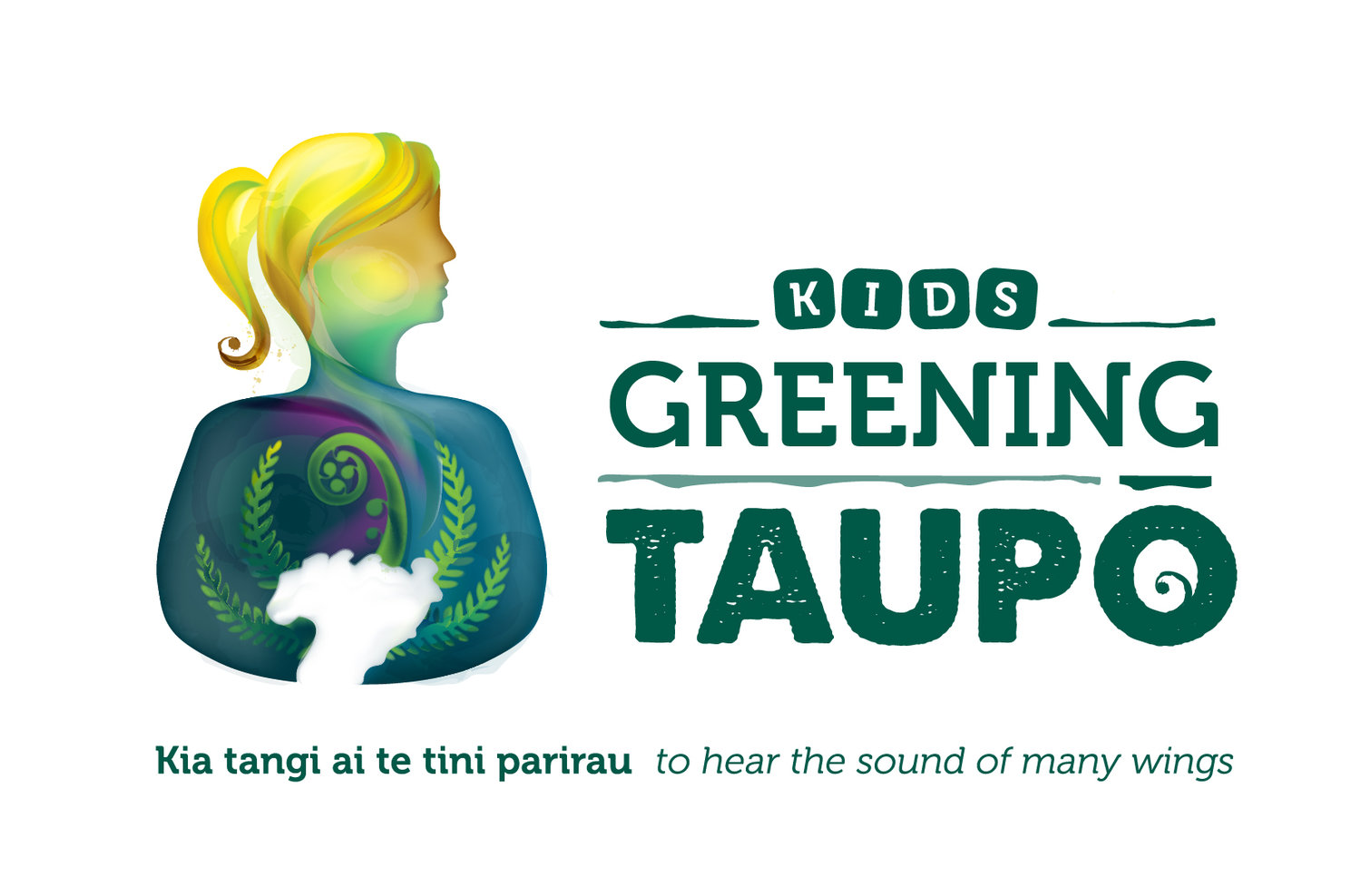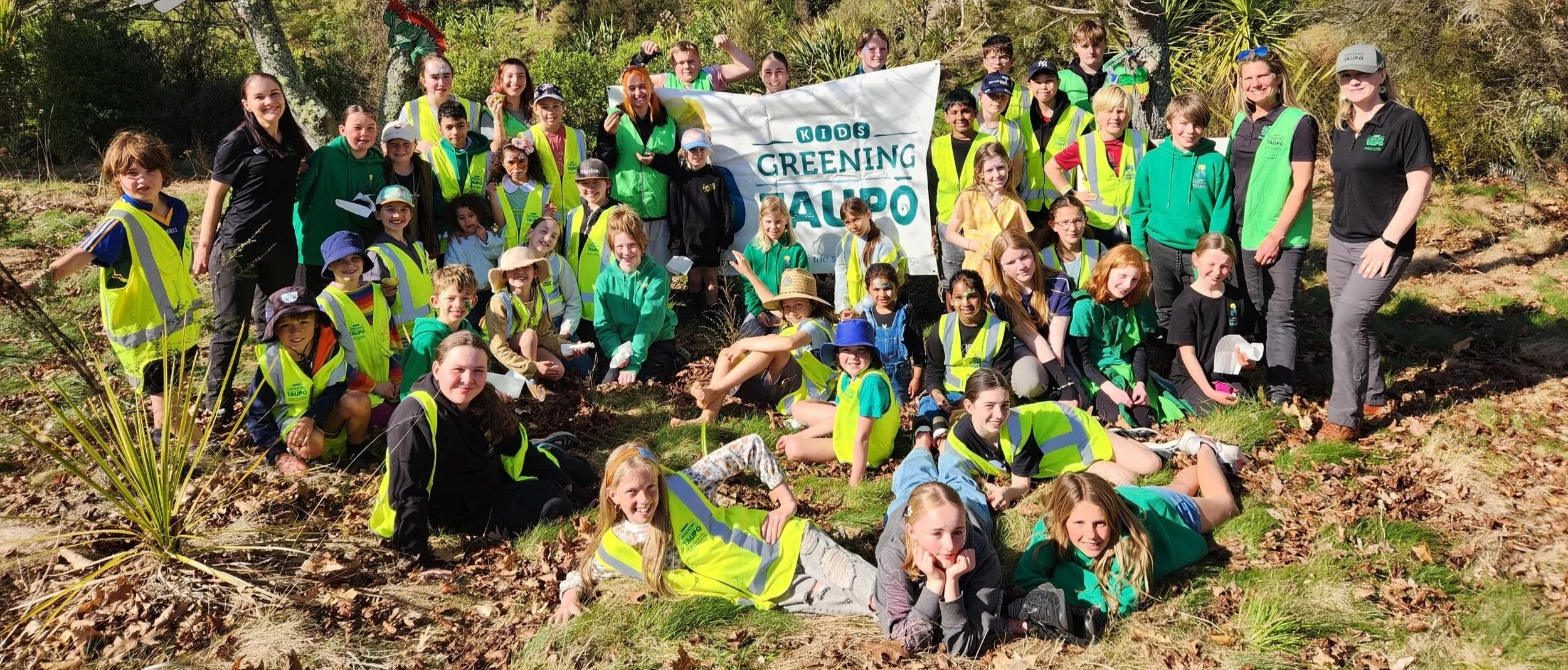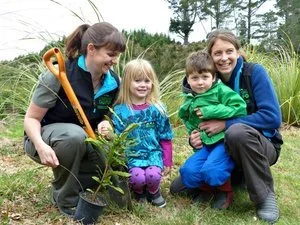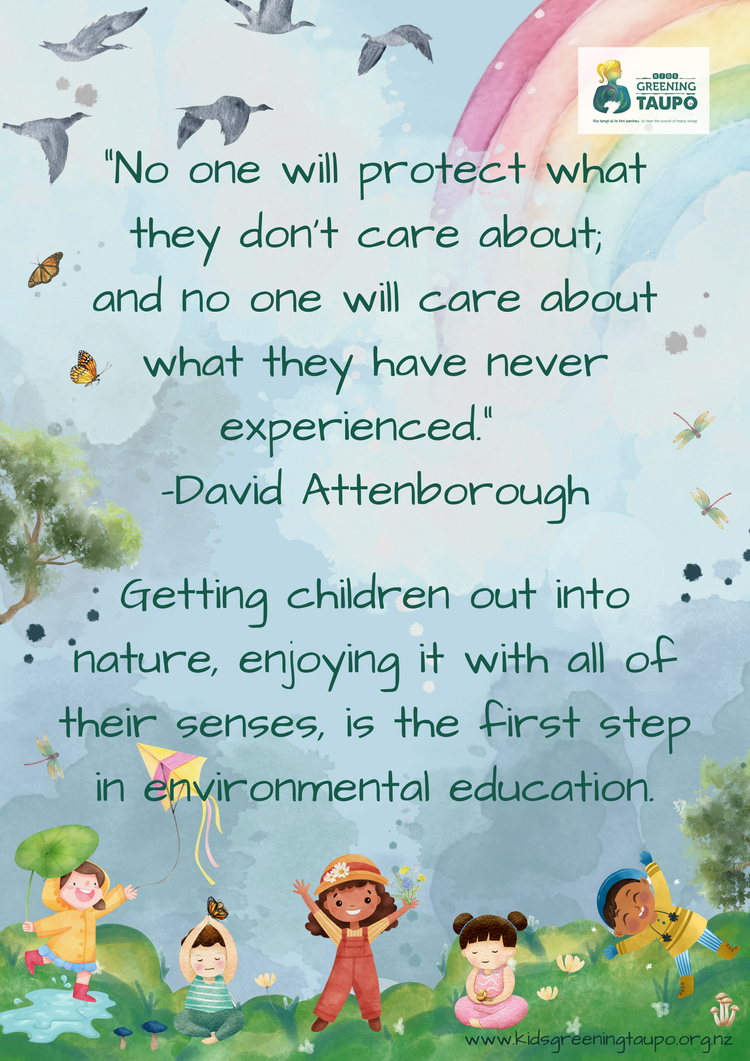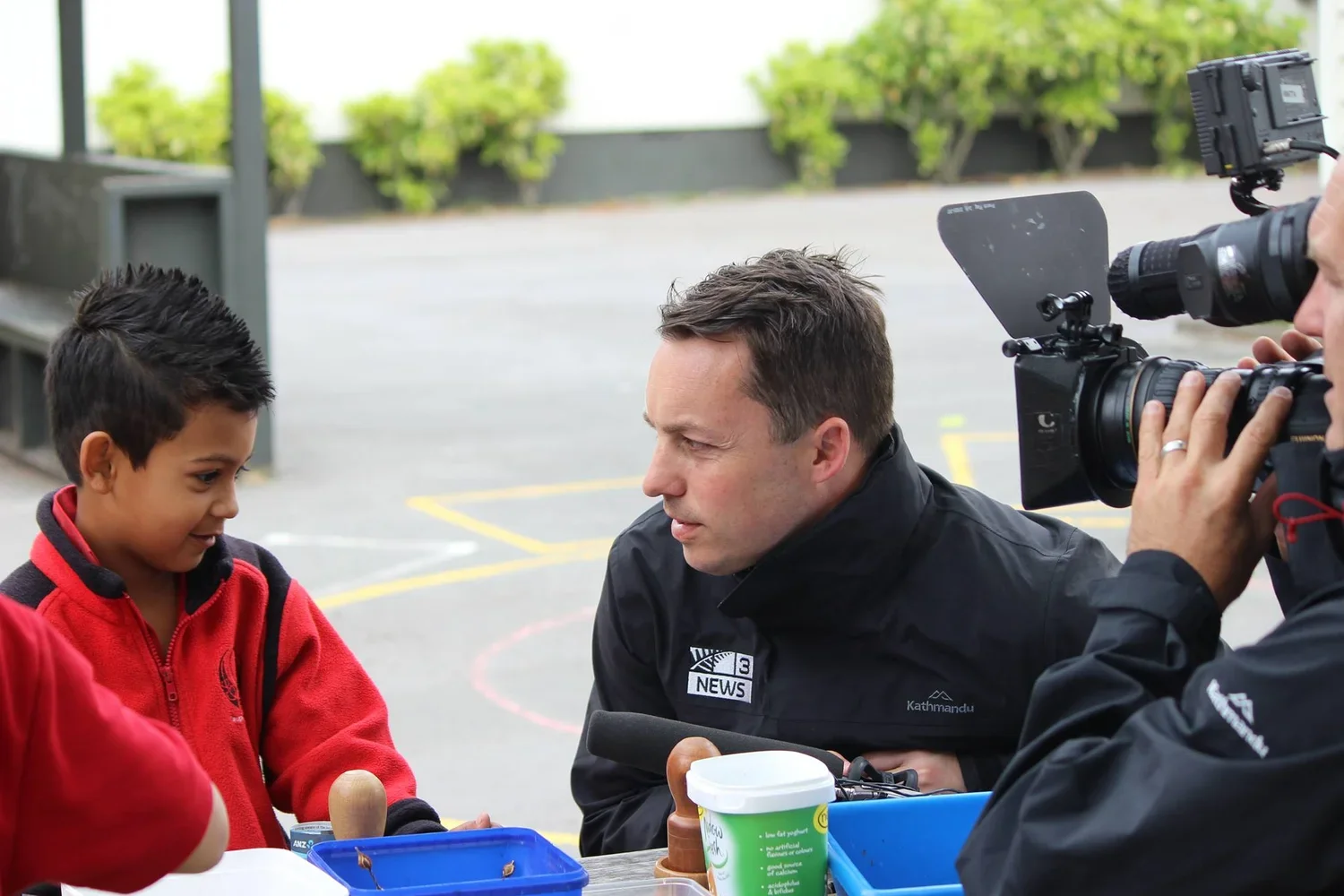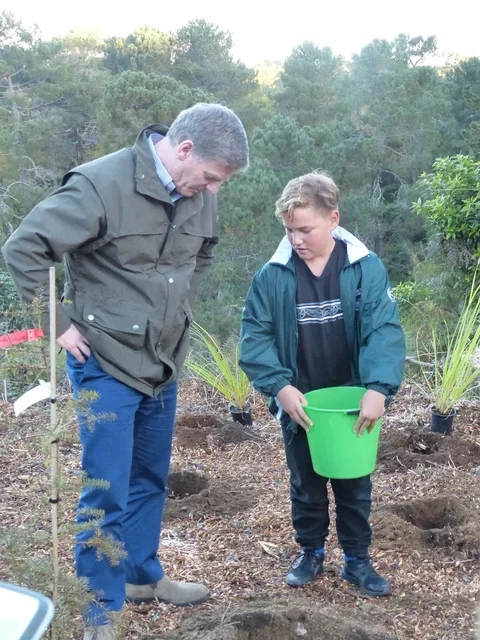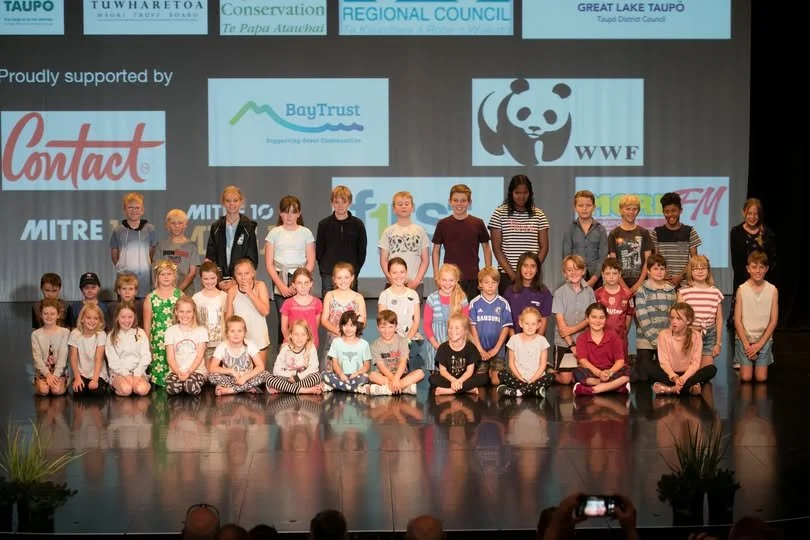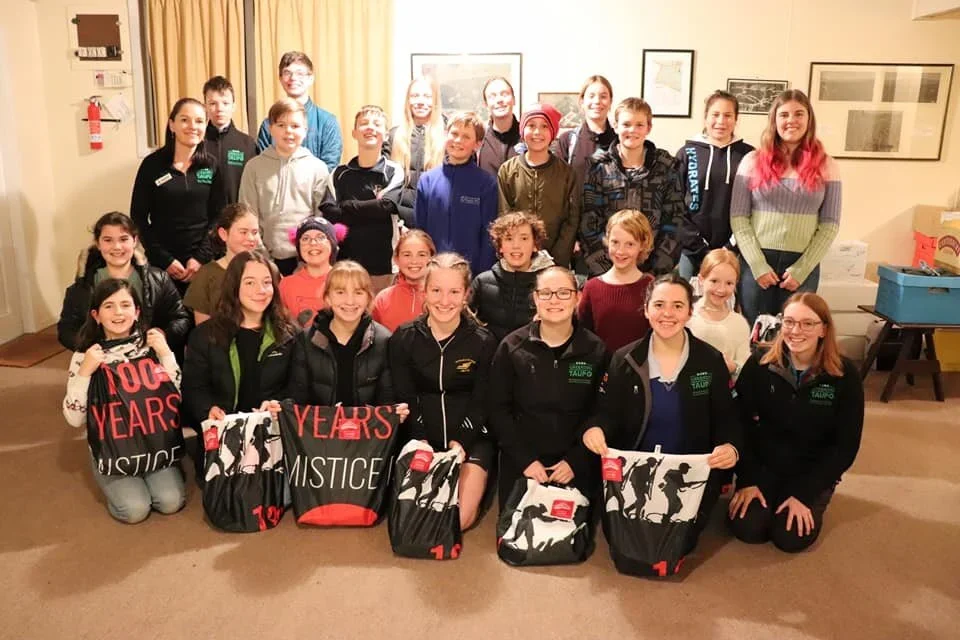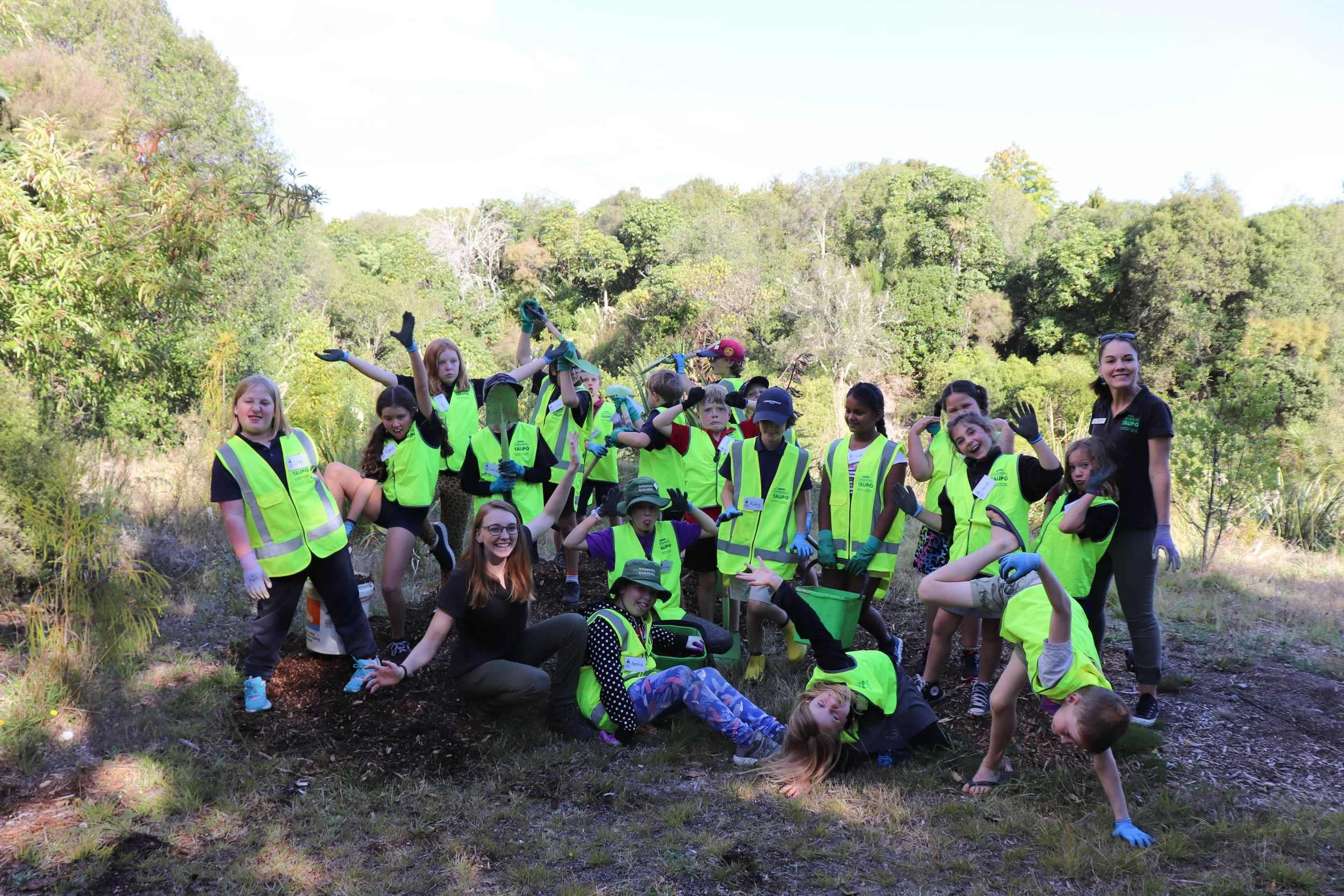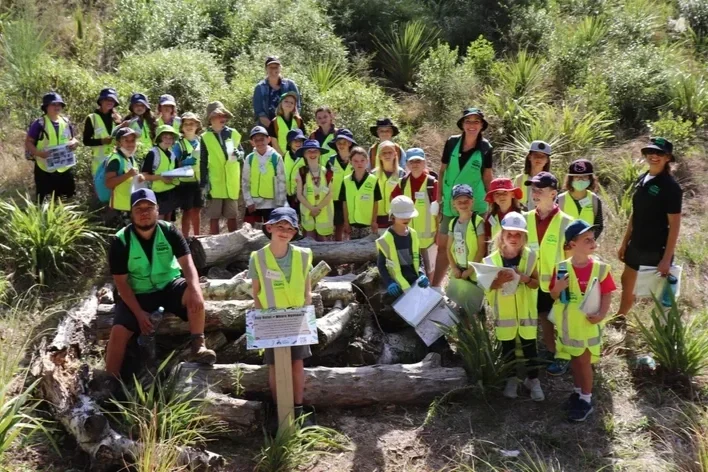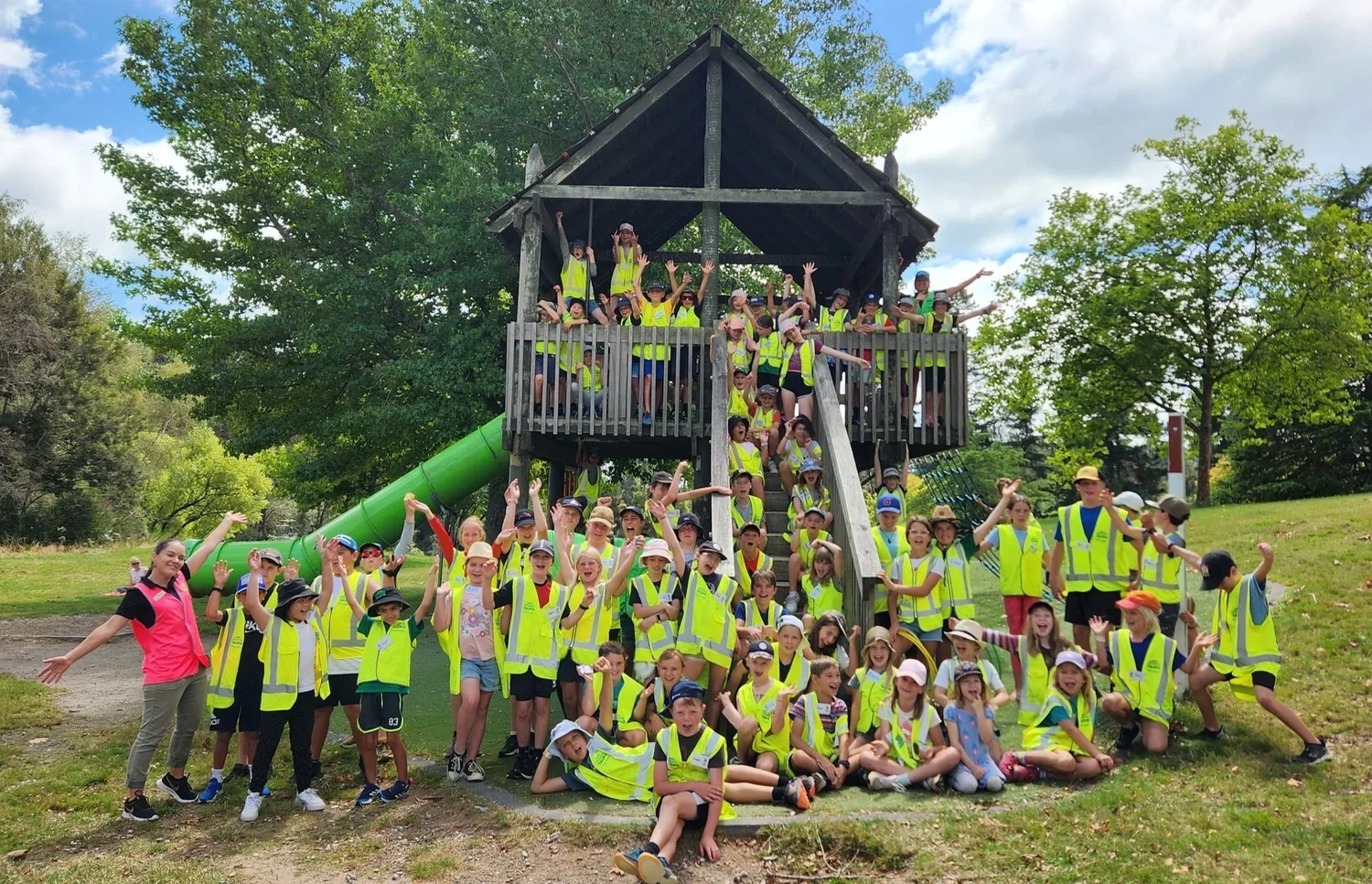2025 - Ten Years of KGT!
Student Leaders and our coordinators at the KGT 10th Birthday Party, 2025, Spa Park
This year, 2025, marked a special milestone: Kids Greening Taupō turned 10 years old! We celebrated this anniversary at Spa Park, the original launch site of the programme back in 2015. Current student leaders supported the day’s celebrations by leading activities, and we enjoyed reconnecting with past student leaders to learn where their environmental journeys have taken them. Read more about the celebrations here.
Here we take a look back at the journey of KGT to where we are today, in 2025…
KGT’s first coordinator, Amanda, at the original launch party in 2015
Behind Kids Greening Taupō stands Project Tongariro - a charitable society established more than 40 years ago to champion community conservation in this region. Over time, Project Tongariro has become the umbrella for a family of initiatives - Greening Taupō, Predator Free Taupō, Waimarino Restoration, and of course Kids Greening Taupō - each one a different pathway for people to connect with and care for the environment. It was through this foundation that Kids Greening Taupō was born.
Greening Taupō was formed in 2013 as an urban restoration project, aimed at making our town a better place for both people and wildlife. From the beginning, the involvement of schools and engaging young people was identified as key to inspiring broader community involvement. Through this goal, Kids Greening Taupō was born. The kaupapa of Kids Greening Taupō has its roots in the the Kids Restore the Kepler conservation education programme in Te Anau. After visiting the Kepler programme in 2014, a group of representatives from Taupō returned inspired by what they had seen in action. This experience sparked the beginning of an 18-month pilot project of Kids Greening Taupō.
Nicola Toki and Thea Depetris at the original launch party in 2015
From the outset, the key ‘ingredients’ of the programme were clear: Kids Greening Taupō would be built on strong community-school partnerships with Project Tongariro providing the umbrella and connective tissue linking schools, iwi, and conservation partners. This programme would offer students authentic learning and leadership opportunities. Although no funding had yet been secured, a dedicated team of community stakeholders (Tūwharetoa Māori Trust Board, Department of Conservation, Project Tongariro and Taupō District Council) and several local kindergartens and schools (Four Seasons Kindergarten, Hinemoa Kindergarten, Taupō Primary, Waipahihi Primary, and Tauhara College) came together to develop and implement the pilot programme. A more detailed account of the development of Kids Greening Taupō can be read about here.
Following Kids Greening Taupō official launch party in Spa Park in October 2015, the Collaborative Community Education Model (CCEM) was developed by the stakeholder team, led by DOC and researcher, Thea DePetris. The continued success of Kids Greening Taupō - in conjunction with the CCEM – has gone on to inspire many similar programmes across Aotearoa New Zealand, including Town Belt Kaitiaki in Dunedin, Project Janszoon in the Abel Tasman National Park, HALO in Whakatane, Te Ara Taiao in Taranaki, and the Wellington City Council community-led environmental programme Kids Enhancing Tawa Ecosystems (KETE).
Today, Kids Greening Taupō continues to hold uphold the principles of the CCEM, allowing the programme to evolve and adapt - embracing new learning opportunities and growing community support along the way. The programme was born out of a simple but powerful idea: that by working with the tamariki, we could inspire the wider community to take part in restoring local biodiversity, while nurturing the next generation of kaitiaki – guardians of our environment. This idea has proven highly successful. Over the years, Kids Greening Taupō has become a well known and valued part of the Taupō community, and a key part of the educational journey for students across local schools and Early Childhood Education centres.
2025 Senior Student Leader Camp
In 2025, over one hundred students from eleven schools applied to be part of the programme’s student leadership teams. Our student leaders regularly meet outside of school time where they get their hands dirty in restoration projects, learn from local experts, and lead community events. They also take the lead on projects within their own kura. Each year the student leadership programme begins with training sessions to build skills, knowledge, and teamwork. From there, students can choose to participate in a wide range of events and opportunities – from planting days to weeding sessions, from community events to overnight conservation camps. Just last year we held camps at Pureora Forest and Tokaanu, giving students the chance to connect deeply with nature and with each other. Read more about the changes to the Student Leadership Programme over time here.
Catfish fishing at Tokaanu
Over the years, KGT has grown from an education programme focused on native planting into something much bigger. Of course, we still plant plenty of native trees, and we’re passionate about teaching the importance of restoring habitats to bring back native biodiversity. But that’s only the beginning. Today, our programme branches out into a wide range of experiences and learning opportunities.
We run weeding, mulching, and watering sessions, and we also design special habitats for lizards, butterflies, and native pollinators. Our students learn about introduced predators, how to monitor them, and take part in trapping. Alongside this, we explore the history of Aotearoa, looking at the decisions made in the past that mean we now need to plant, weed, and trap to restore balance.
When we head out on bushwalks, we might be tasting native berries, collecting treasures, learning traditional uses of plants, birdwatching, or bug hunting. Students get to see, touch, and taste the environment in ways that make learning come alive.
Senior student leaders submitting to council
We’ve introduced a biological control and we teach about biosecurity, including why Check, Clean, Dry is so important to stop invasive clams. We go catfish fishing, and we have even hand-pollinated a rare plant usually pollinated by bats, Te Pua o te Reinga/dactylanthus.
Freshwater learning is a big part of what we do too. We investigate macroinvertebrates, food webs, wetlands, and riparian planting, often through fun experiments that show just how important these ecosystems are.
Beyond the field, we love connecting with the wider community. We support Greening Taupō with 10 large communty planting events each year, with our students running the registration desk and showing people how to plant correctly. We host a range of other events events and workshops for teachers and the community, run nature art and photography sessions, and celebrate creativity through a huge annual art competition that is part of the Greening Taupō Day celebrations. Greening Taupō Day, started in 2021, has become a major event for the town with about 2000 people attending to celebrate Arbour Day, plant trees and fundraise for Greening Taupō and KGT. Attendees include students from most local schools, many ECE centres, and many local businesses. Over 50 businesses and organisations have stands there with free activities for the tamariki.
2024 Student Leaders at Greening Taupō Day.
The list of what we do keeps growing—but at the heart of it all is a simple goal: to connect children to nature. We want them to see the beauty in the natural world, to feel a sense of wonder about what’s around them, and to carry that connection into the future. If they can experience this, then they’ll want to protect it and they’ll become the leaders of tomorrow—people who value and care for the environment. That is, and always will be, our ultimate goal.
We now support 46 schools and ECE centres with native restoration plantings on site and/or on neighbouring council land, create bespoke programmes with teachers, and help run restoration events across the district. We work from Reporoa to Kuratau, but our online resources are used nationwide, and our work continues to inspire similar programmes around the motu. Waimarino Restoration, another education programme under the same umbrella of Project Tongariro, now works with schools around the Tongariro National Park area, so between us we cover environmental education for the Central North Island.
Most importantly, over the past decade we have connected thousands of tamariki and rangatahi with nature. We’ve watched them grow in confidence, knowledge, and passion. And we’ve seen them step up as leaders – not just for the environment, but for their schools and communities. The KGT programme has become an integral part of the educational journey of students in this region.
None of this would have been possible without the dedication of our partners, our teachers, our coordinators, our funders, our students and their whānau.
As we reflect on the last ten years, we are proud of what we have achieved together. But this is only the beginning. The next ten years will bring new challenges and new opportunities – and we hope that Kids Greening Taupō will continue to thrive, to innovate, and to inspire.
2025 Coordinators- Robyn Ellis (Greening Taupō and Predator Free Taupō), Heidi Pritchard (KGT education coordinator and ECE lead), Rachel Thompson (Lead KGT education coordinator), Naomi Keane (KGT support coordinator)
Being interviewed by 3 News in 2015
Planting with the Prime Minister, Bill English, 2016
2019 Student Leadership Team Formal Ceremony
2020 Student Leadership Team
2021 Junior Team - For the first time there was a junior team offered for younger students who were interested.
2021 Senior Team
2022- one of four student leadership teams with their ‘Bug Hotel’ at Spa Park. For the first time numbers on the team reached 100 students.
2022- The first ‘Predator Free Kids Team’. Predator Free activities including running a trapline at Spa Park are now optional activities for all student leaders.
2023- The second year of our student leadership programme having over 100 students, split into four teams!
